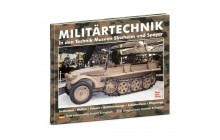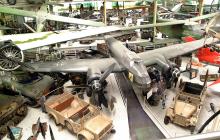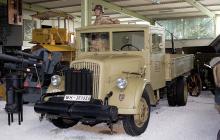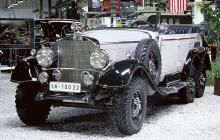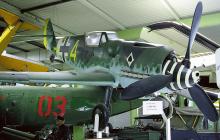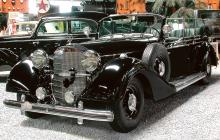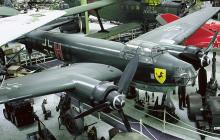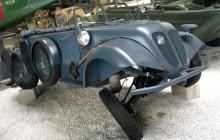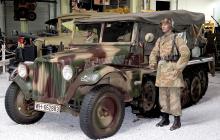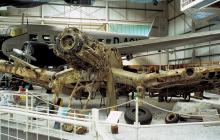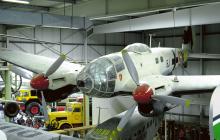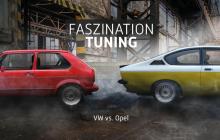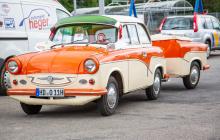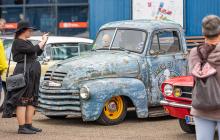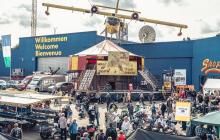Tank V Panther
In the extensive military-history exhibition of the Technik Museum Sinsheim, two battle tanks V "Panther" of the German army can be seen. In addition to a completely preserved specimen, which is presented with a moving track and a movable turret. The museum also shows a wreck, which was employed at Cherkassy in the Ukraine in February 1944 and was lost there.
After the tanks III and IV had attained serial maturity, the leadership of the Wehrmacht (German armed forces) did not undertake any serious efforts to reinforce the tank force. This changed only when one had to recognise that the Russian army had succeeded in not only constructing a superior tank but also building it in considerable numbers, and this was completely unnoticed by German espionage. In late 1941, MAN and Daimler-Benz were therefore entrusted with the development of a new heavy battle tank with a combat weight of about 35 tons, which was intended as a response to the T-34.
Already in May 1941, before even the start of the Russian campaign, a development contract for a heavy tank had already gone to Henschel and Porsche. This, however, should be so large and heavily armed that a combat weight of about 60 tons was to be expected. Already after the first few months of combat experience in Russia, it was clear that such a tank would be only partially suitable for use on the Eastern Front. Nevertheless, the development was continued without restriction.
As in the case of the Panzer III and IV, it was again decided, despite the limited armament capacities, for the simultaneous construction of two different tanks, instead of concentrating the energies in only one tank which could compete with the Russian tanks. The order for the smaller model called Panzerkampfwagen V »Panther«, which finally reached a weight of approx. 45 tons due to numerous changes and was almost twice as heavy as a tank IV, finally went to MAN.
From the Henschel design, the "Tiger I" was created, which weighed 57 tons, and in the second version "Tiger II" or "Königstiger" (King's tiger), a gigantic 68 tons. The "Panther" is fundamentally different from its predecessors. All the surfaces on the bow and sides are bevelled or rounded. Corners or angles, which can act as projectile capture points, are almost completely absent. The tracks are wider and the suspension is without stabilising wheels. These are all design features which have been successfully adopted by the T-34. Because of the long barrel, the armour-piercing effect of the 7.5 cm KwK (tank gun) of the "Panther" was even greater than that of the 8.8 cm KwK (tank gun) of the "Tiger". Technologically, the "Panther" is regarded as the best German tank in World War II.
However, due to the far too short development period of just over a year, it suffered from numerous technical teething problems. Because of drive problems, the first "Panthers" were left lying around in rows. The first large-scale operation in the tank battle of Kursk in the summer of 1943 became a disaster. More "panthers" were lost by defects than by enemy fire. Many of these deficiencies could be corrected in the following years, but due to the constant bombardment of the arms industry, it was impossible to produce the "Panther" in the quantities that would have been required for regaining supremacy.

